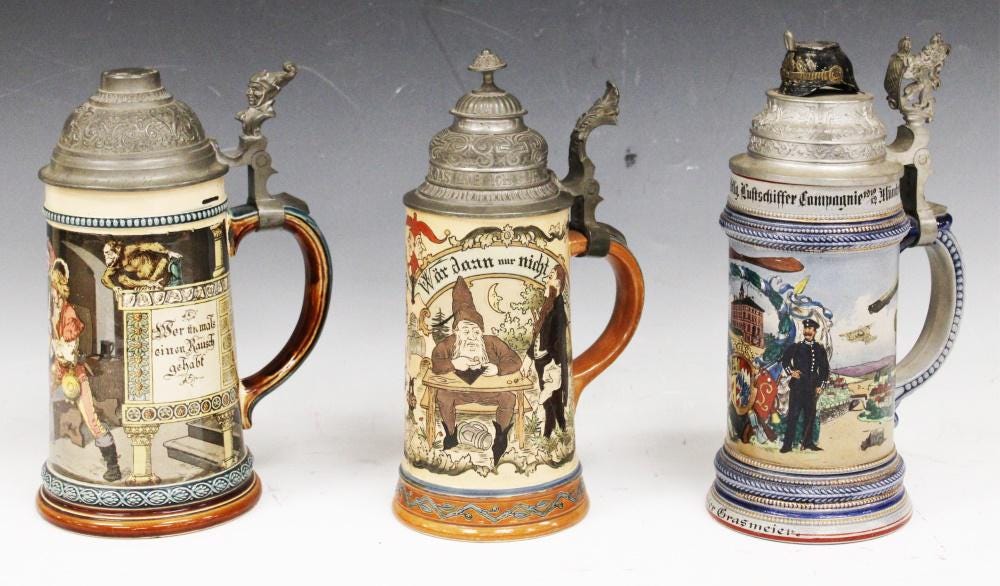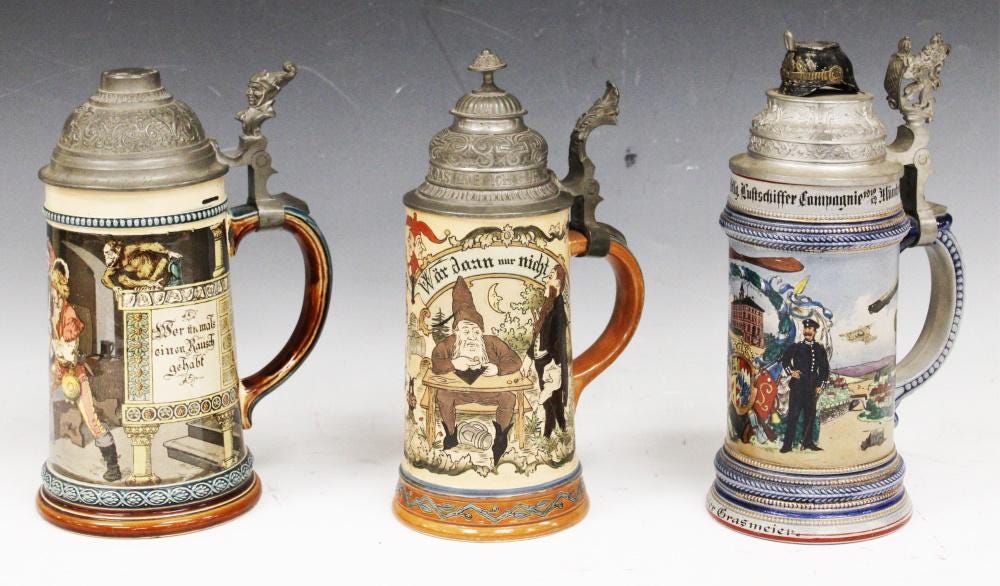
NEW YORK — German beer steins have been collected as far back as the 14th century. Newly made steins are popular souvenirs with tourists visiting German towns and cities such as Cologne, Munich, and Heidelberg. Antique and vintage ones, however, are highly prized and can fetch thousands of dollars at auction. Whether old or new, steins often feature images of the city they represent or local landmarks such as a castle or mountains and rivers. Others use scenes to tell a story.
The word “stein” traces its roots to the phrase Stein Krug, or “stone mug,” or Steingut, which means “stone items.” They can be made from stoneware, wood, silver, glass, or porcelain, but the most commonly seen and most traditional type is a stoneware or earthenware piece that takes a cylindrical tankard-style form. The basic design of most German beer steins is this shape, along with an applied handle and a hinged pewter lid with a thumb-lift to make opening the lid easy. They are usually painted with themed decorations and inscribed with meaningful phrases, or to indicate where it came from. At first, these steins were simple utilitarian items, but over time, artisans added carved or applied decoration to make them more beautiful.
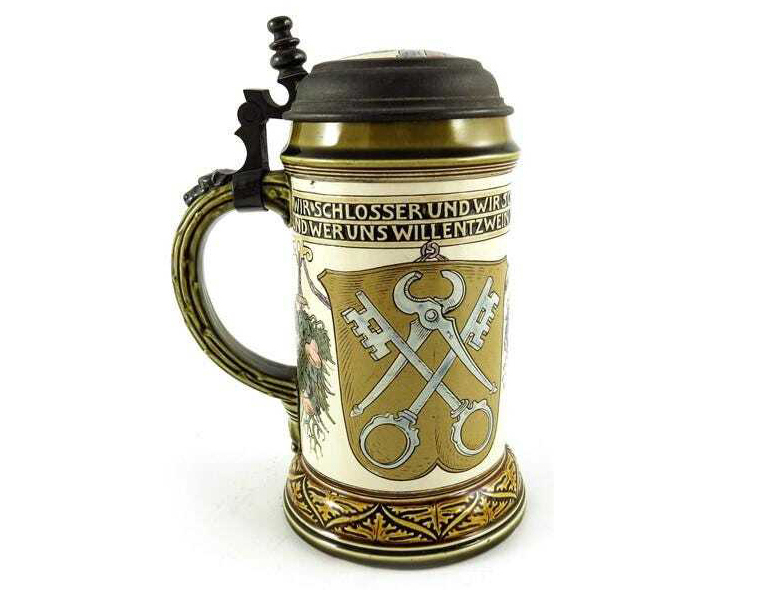
Drinking vessels seldom have lids, but lids are an integral part of German beer stein design, and they add value in the eyes of collectors. But why have a lid? Back in the 14th century, when steins first appeared, the bubonic plague was ravaging Europe. Germany enacted laws requiring that drink containers have covers to make them more sanitary. Stoneware mugs were widely made at the time, so potters began attaching pewter lids to them, and this style has stayed much the same, centuries later. Steins were made all across Europe, but Germany is best known today for this cottage industry.
Lids are important to German beer steins and tend to embody clues about the vessel’s age, value, and how well it was made. Lids can come in a variety of forms, ranging from cone-shaped, which is the most common, to flat lids that are often engraved. Ornamental lids are more valuable, and are often seen on limited edition steins. These lids are typically cone-shaped and have a finial as well as elegant decoration.
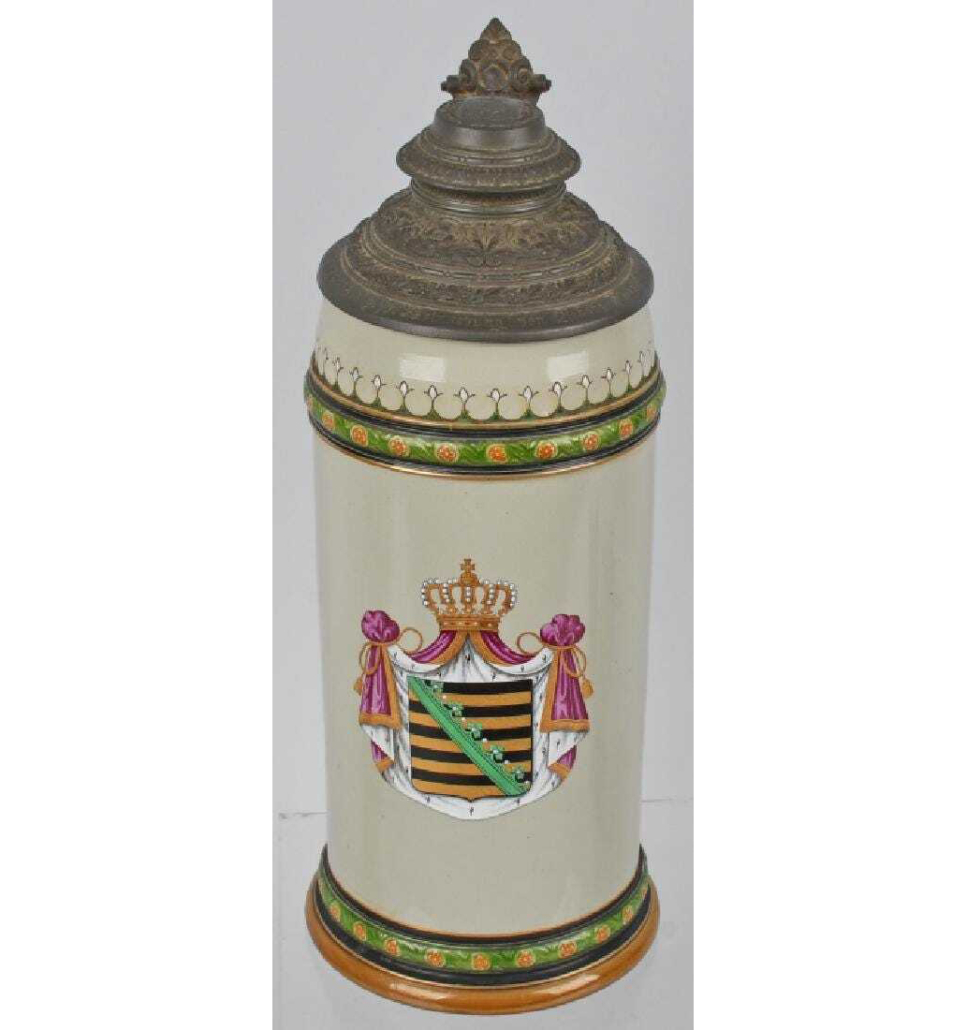
The Mettlach region of Germany was noted for producing fine stoneware steins, especially those made in the 19th and 20th centuries by the Villeroy & Boch company, which earned its reputation with fine and common examples to cater to all budgets. “Made by internally developed, unique techniques, these etched, relief, and print-under-glass steins were museum pieces in their own time and top prize winners,” according to the Beer Stein Library. Treasured by collectors, the finest steins are elaborately decorated, having either ceramic or pewter lids, and they vary in the volume of liquid they can hold, from a quarter-liter to four liters.
German beer steins frequently have a decorative theme or motif, such as animals, the military, sports, religion, folktales, literature, or holidays, especially Oktoberfest and Christmas. There are also occupational steins that indicate one’s profession. Miniature steins, known as child versions, are also collectable. Symbolism is a major element in steins; the symbols often reflect the German peoples’ penchant for drinking, or picture various animals, including monkeys, owls, cats, lions, and caterpillars. Even food depictions can appear on steins, most commonly radishes, a popular beer snack in the Bavarian region.
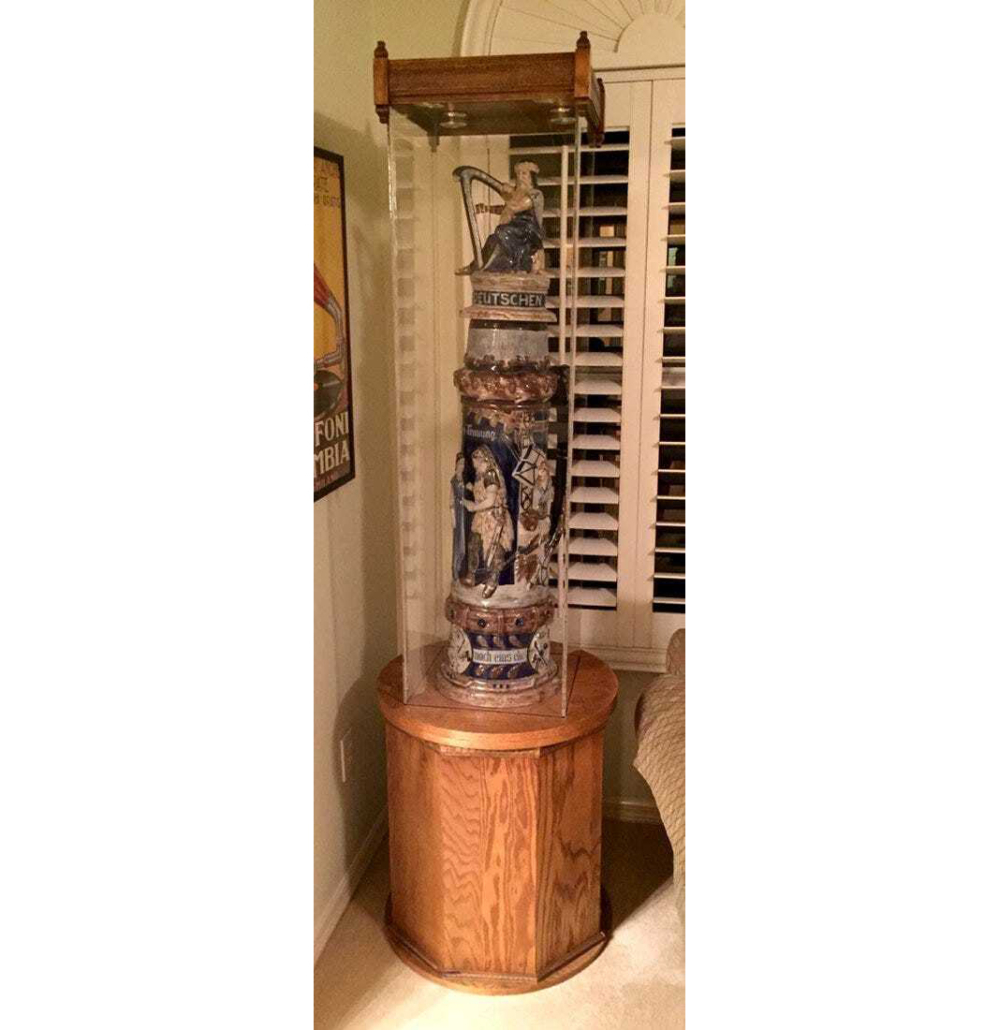
Interesting decorative motifs on German beer steins include one known as the Munich child, who is pictured dressed in a cowl, holding radishes in one hand and a beer stein in the other. The image is usually accompanied with an inscription: “Gruss aus Munchen,” which translates to “Regards from Munich.” This image has been said to be a parody of Munich’s coat-of-arms. Official coats-of-arms are often depicted on steins as well.
The Stein Collectors International, which has much information on its website at https://stein-collectors.org, notes that imperial German regimental steins are collectible but adds that some were reproduced after World War I. The website states, “There is probably no other single class of collectible stein so widely copied and generally misunderstood as the Imperial German soldier’s souvenir, the ‘reservist’ or ‘regimental’ stein, which flourished in popularity throughout the approximate time span 1880-1914.”
Usually made of porcelain, these regimental steins commemorate the several years of reserve duty German men were required to serve. They would be sold to the soldier upon completion of his service and typically passed down in the family as a cherished memento. Both the thumb-lift and the top finial were marked to indicate which military unit sold the stein.
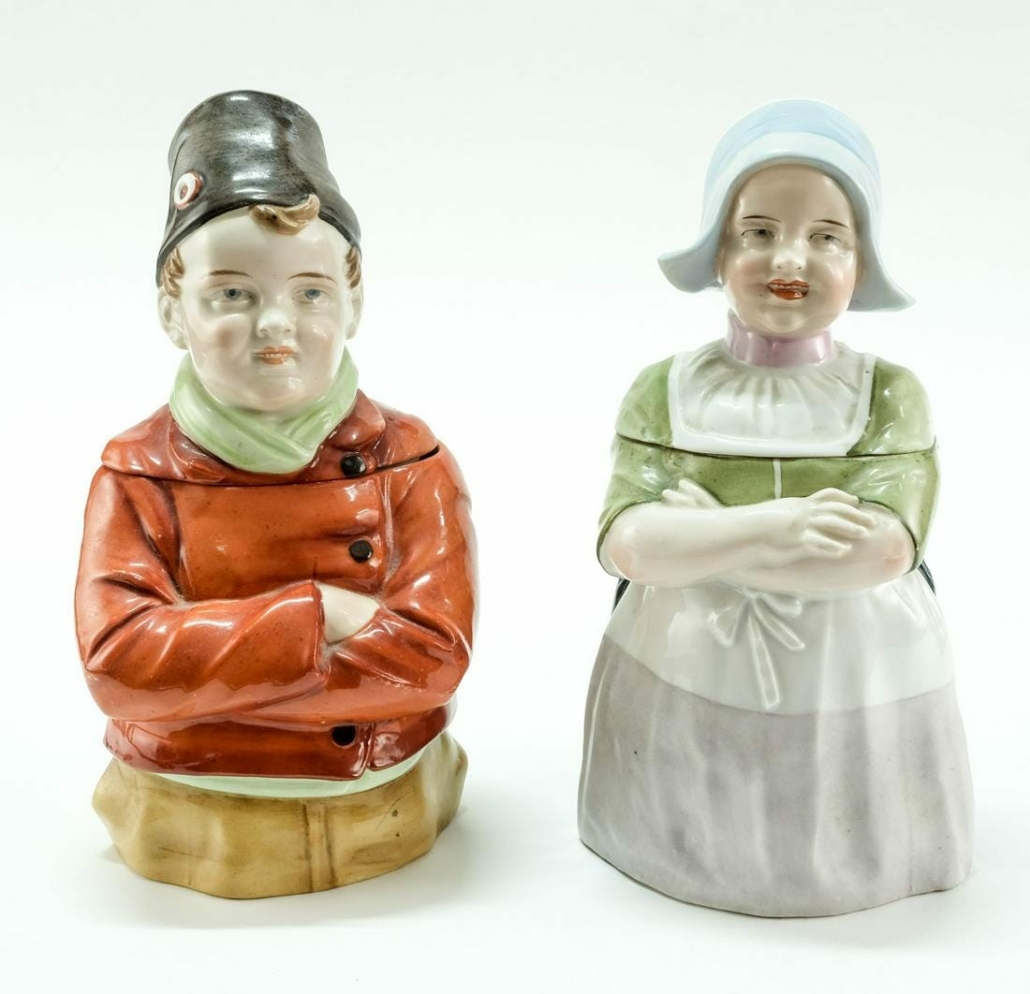
Whimsical figural character steins are also sought after and feature everything from people to animals or the just the heads of both. Sometimes these German beer steins showcased allegorical forms. Because hunting was a popular sport in Germany, hunting motifs are abundant. One company known for its character steins was Schierholz & Sohn in East Germany. Some of its wares were confusedly marked “Musterschutz,” leading some to think that was the maker’s name. The term roughly translates to “design” or “patent protection.”
Many serious collectors are drawn to German beer steins made during the so-called Golden Age of Steins, which denotes a 15-year span that straddles the years before and after 1900. While it’s always best to buy from reputable sources, collectors can learn how to authenticate steins by observing their heft, earthenware color, and paint style. Hand-carved and hand-painted steins are typically the most valuable. Hand-painted ones will often feel “raised” and have minor irregularities that mass-produced ones will not.
# # #


